Wondering when to spay a Great Dane? Female Great Dane owners are often unsure to have their dog spayed and do not know when the right time is. It doesn’t help that there are so many opinions online, not to mention, many veterinarians approach this differently too!
There are a few things to consider before making the decision to spay your Great Dane.
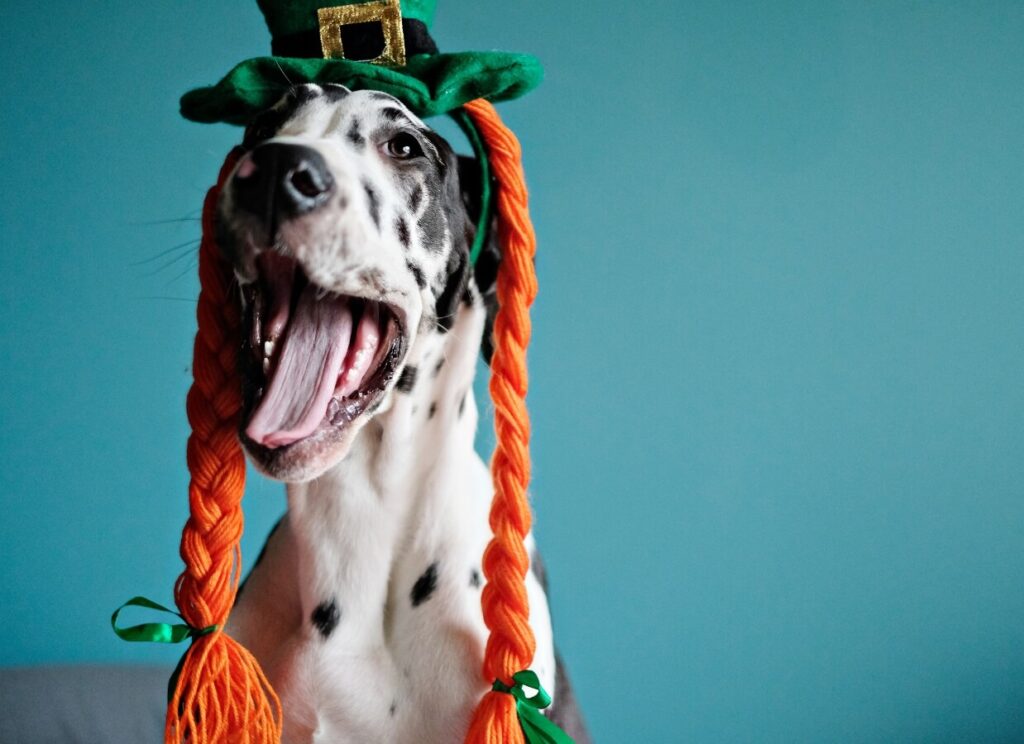
When to Spay a Great Dane
Great Danes are giant breeds which can grow, on average to about 120-150 pounds. They are one of the tallest breeds of dogs and have a life expectancy of around 8-12 years.
There are many schools of thought about when to spay a Great Dane, but it is believed that in general, large and giant breed dogs may benefit from delaying the procedure until their joints are more mature.
Because most pets are spayed before their first heat cycle, choosing to delay comes with many considerations (accidental puppies being just one of them). Outside of accidental puppies, intact female Great Danes are more prone to mammary cancer and pyometra.
Some studies show that delayed spay (waiting until after age 1-2 in Great Danes):
- Can reduce the risk of osteosarcoma
- May reduce the risk of ACL/CCL tears
- Will likely result in a better structural outcome of the adult dog, which means stronger bones, better joints, and less chance of early onset arthritis
While these benefits of keeping a female Great Dane intact are still being studied, it’s important to note that there are many negatives, too. It’s important to speak with your veterinarian and balance the pros and cons of spaying your Great Dane.
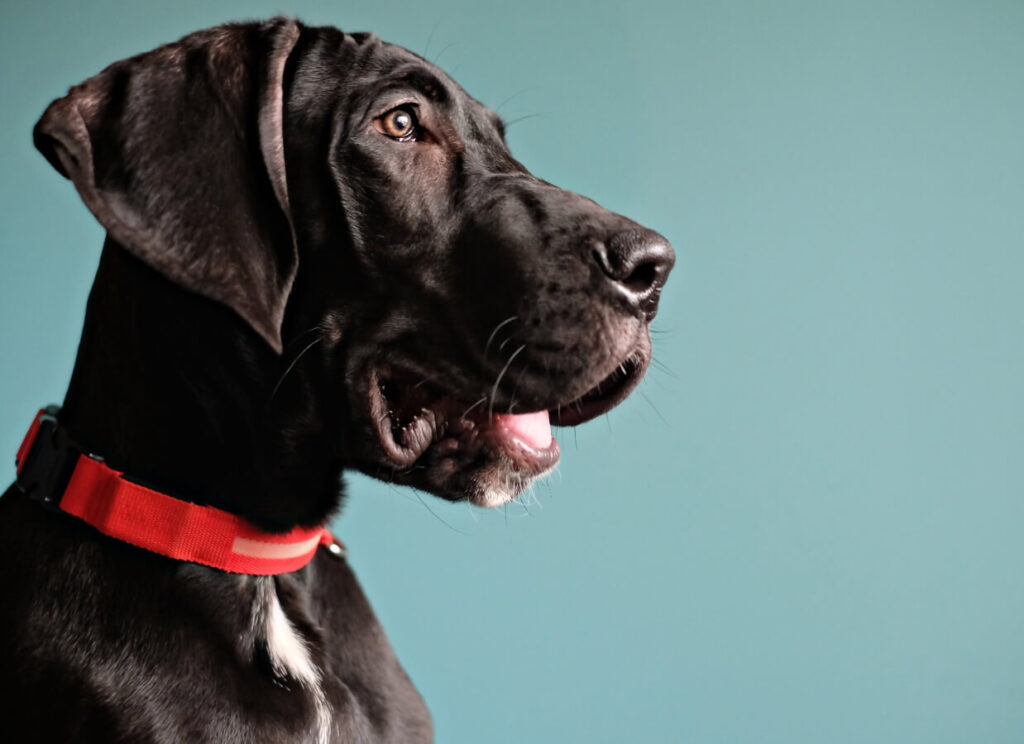
What Does Spaying Your Great Dane Mean?
Making a decision to alter your female dog means that you complete the surgical removal process of her ovaries and uterus.
The benefits of spaying your Great Dane include:
- Reduced risk or even risk elimination of dangerous health conditions such as pyometra, mammary cancer, ovary cancer, and otherwise
- No heat cycles to deal with
- No accidental puppies
- No false pregnancies or milk production
- Often, calmer and more stable behavior
Making the decision on when to spay a Great Dane should not be taken lightly. You should consider researching the pros and cons on when to spay a Great Dane. In other pets and breeds of dogs, this is generally done when your dog is between the ages of four to six months, but can be done at any age.
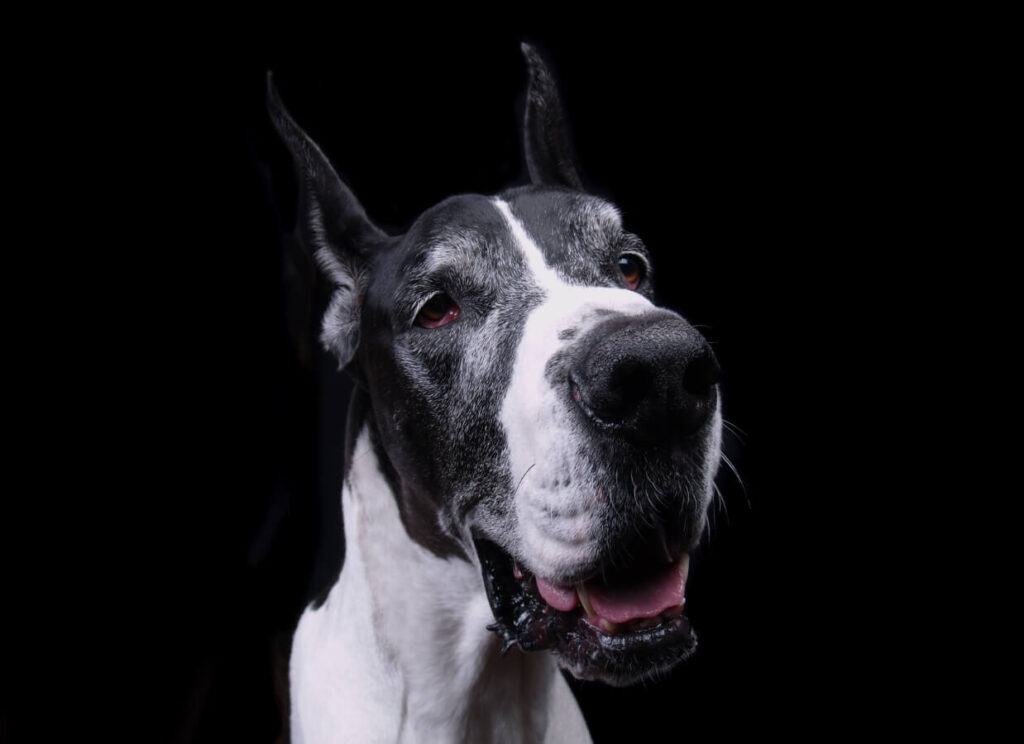
Making the Decision on When to Spay a Great Dane
There are a few things to keep in mind before you make the decision on when to spay a Great Dane, or whether to spay at an early age or young age.
Many people will tell you that they ‘spayed their dog at 6 months’ and their dog was ‘fine’.
Keep in mind that ‘fine’ is a relative, unregulated term and everybody has a different definition for this term. Anecdotal stories should be taken with a grain of salt.
We recommend consulting with your veterinarian, who should have some continuing education on the topic. If you choose to keep your Dane intact until she’s older, it’s important to understand the risk factors that come with that decision.
Female Great Danes
A female Great Dane develops much differently than male Great Danes. In general, they tend to be smaller and not as muscular or masculine in their appearance.
Female dogs have sexual reproductive organs which are full of hormones. These hormones contribute to their growth and development and are present before spaying or neutering a dog. However, after spay or neuter, the hormones are removed.
This can impact their ability to grow in the way in which they were designed.
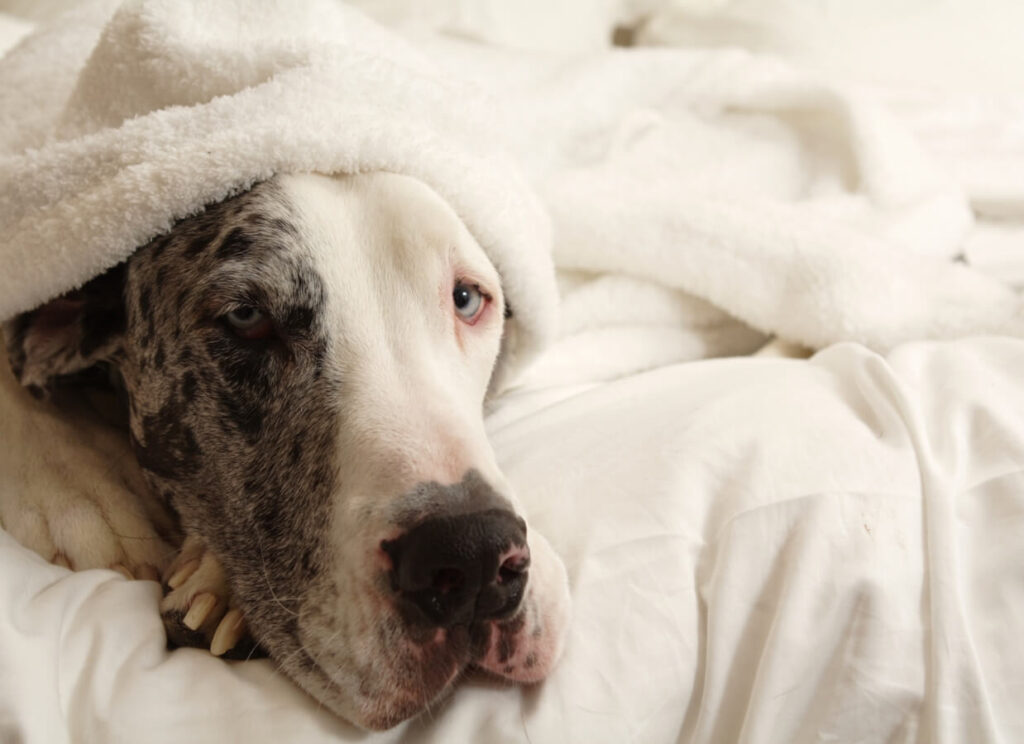
Risks or Considerations for Spaying Great Dane Dogs
There are other health considerations for female Great Danes and when to spay a Great Dane in general (and some of the same risks are relevant with neutered males). Here are some of the risks associated with early spay (prior to one year of age):
1. Hormone-Responsive Urinary Incontinence
Urinary incontinence is a somewhat common health concern for female dogs that were spayed at a young age.
This can mean that they leak urine when they rest or sleep.
There are medications to treat this, and it is generally harmless (just messy).
2. Weight Gain
Another consideration is your dog gaining weight. It is not uncommon for your dog to put on a few pounds after being spayed. The main reason for this weight uptick is due to a decrease their metabolism.
To avoid this weight increase, it is important to keep up with a healthy diet and moderate exercise for your dog even after they have been spayed.
After spay or neuter, sometimes the energy level of your dog can slow, which makes it more difficult to keep the weight off. It is very important that you monitor food intake and activity levels, as excess weight can shorten lifespan by as much as 2 years.
There is only one person who knows your Great Dane and it’s best- and it’s you- so be sure to advocate for them whenever possible!
3. Cancer
Knowing when to spay a Great Dane is a very difficult decision. There are also some risks to keeping your dog in tact, and one of those can be certain types of cancer. Giants dogs are unfortunately more prone to certain types of cancer. One of those being mammary cancer, which is common in older female dogs that have not been spayed.
This type of cancer is almost nonexistent in dogs that have been spayed at an early age. Therefore, spaying your female dog at age 2 minimizes the risk of seeing this form of cancer significantly.
On the flip side, some studies show that osteosarcoma cancer is more common in pets that were spayed under the age of one.
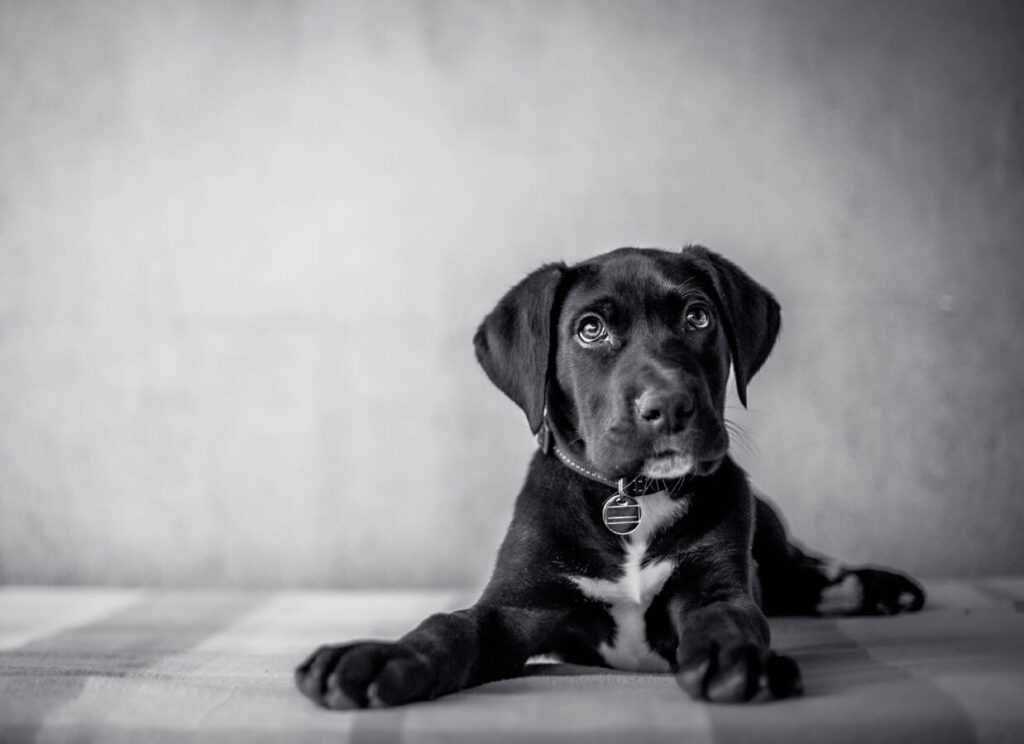
Risks of Cancer in Getting or Not Getting Your Male Great Dane Neutered
Testicular cancer can be found in your Male Great Dane if they are not neutered. This is another form of cancer that can be easily prevented by getting your dog fixed early on. Testicular cancer is not as common as mammary cancer, but it is still something to keep in mind when making the decision of whether you want to keep your male Great Dane in tact or opt for the decision to neuter your male dog.
4. Unwanted Pregnancy with your Female Great Dane and Other Dogs
Of course, if you decide to not spay or neuter your dog there is always a risk for unwanted puppies.
Any time there are two dogs that are not the same gender together, as well as not fixed, you run the risk of having an unplanned pregnancy. Un-spayed and un-neutered dogs tend to gravitate towards one another and intact males will do almost anything to get to a female in heat.
Unplanned puppies are a massive burden on the shelter/rescue system, not to mention, a LOT of work. Pregnancy is a medical condition that comes with complications which can be devastating to the female dog. Breeding and unplanned pregnancies should never be taken lightly.
5. Behaviors of Dogs
Many people will state that there are different behaviors before and after the spay or neuter process. This is true, however, this should not be a primary reason to spay or neuter your dog. We have seen countless dog families rely on the spay or neuter to correct unwanted behavior or aggressive behavior. Unfortunately, spaying or neutering does not always serve as a ‘fix’ for any dog breed. You could see humping behavior prior to a spay/neuter and still continue to see that same bahavior after the procedure.
The best course of action is identifying the primary cause of the behavior and working with a professional to correct it. Spay or neuter may be part of a comprehensive behavioral treatment plan, but should never be anticipated as the “cure”.
6. Growth Plates
Other animals or dog breeds do not have the same types of concerns about their growth plates as Great Danes do. Great Danes are a dog who grows until they are over 24 months.
Their bones, ligaments, and tendons are all still growing and developing well into their adult years. If you were to spay or neuter your dog too early, it could lead to health issues with their growth plates closing too quickly. This also impacts their overall body, spine, or leg structure.
Another common concern with early spay or neuter of dogs is the impact it has on their feet or leg structure. This is, again, due to the hormones that are present before spaying or neutering which help with the growth and development of their bones, ligaments, and tendons.
7. Surgical Risk
Spaying or neutering Great Danes comes with the standard anesthetic or surgical risk that all surgeries come with.
Your Great Dane is so large that it sometimes has a harder time adjusting to anesthesia than other dogs. Always be sure to get routine blood testing prior to putting your female or male Great Dane under anesthesia. Speak to your vet about what blood panels they find necessary for your Great Dane to have taken. Without completing blood testing prior to your Great Dane being sedated, you run the risk of your Great Dane having blood clotting issues such as Hemophilia A, amongst others.
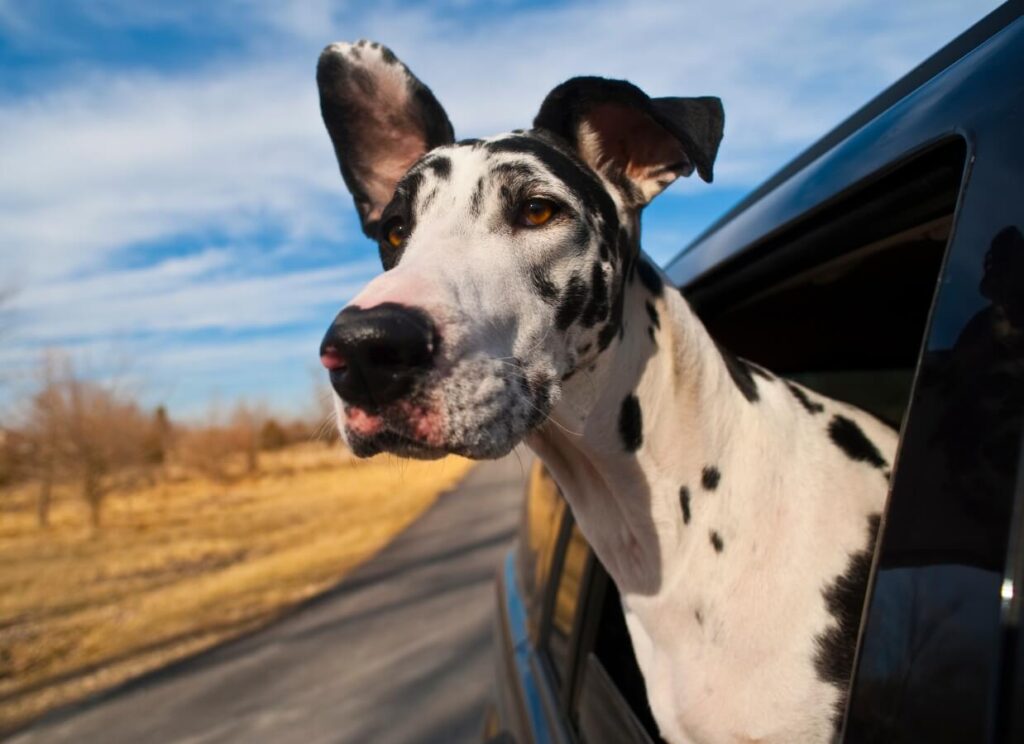
8. Pyometra
One common health conditions to consider for spaying or not spaying your dog is Pyometra. Pyometra is a life-threatening infection of the uterus that can occur in any un-spayed female dog.
For this reason, it is important to know the signs of this infection in female Great Danes, watch your individual dog closely, and monitor your Great Dane’s health during the duration of her remaining un spayed.
When pyometra happens, the uterus fills up with pus. In some cases, this can only be resolved with a delicate, expensive, and life-threatening surgery.
9. What is considered an early age to spay in Great Danes?
Most male and female dogs are considered to be full grown at around 12 months of age.
At this age they have completed most of their growth and development. However, most large dog breeds can take up to two years to reach their full adult size.
It is important to keep in mind that Great Danes mature slower than other dog breeds. Since other dogs grow quicker and are full grown at a younger age, Great Dane dog’s require longer time to allow their growth plates to fully develop. Spaying before 24 months is often considered ‘too young’ for Great Danes.
As the owner of a Great Dane, you are wondering about the best time to spay her. First, it’s important to understand the heat cycle and the clinical signs of estrus.
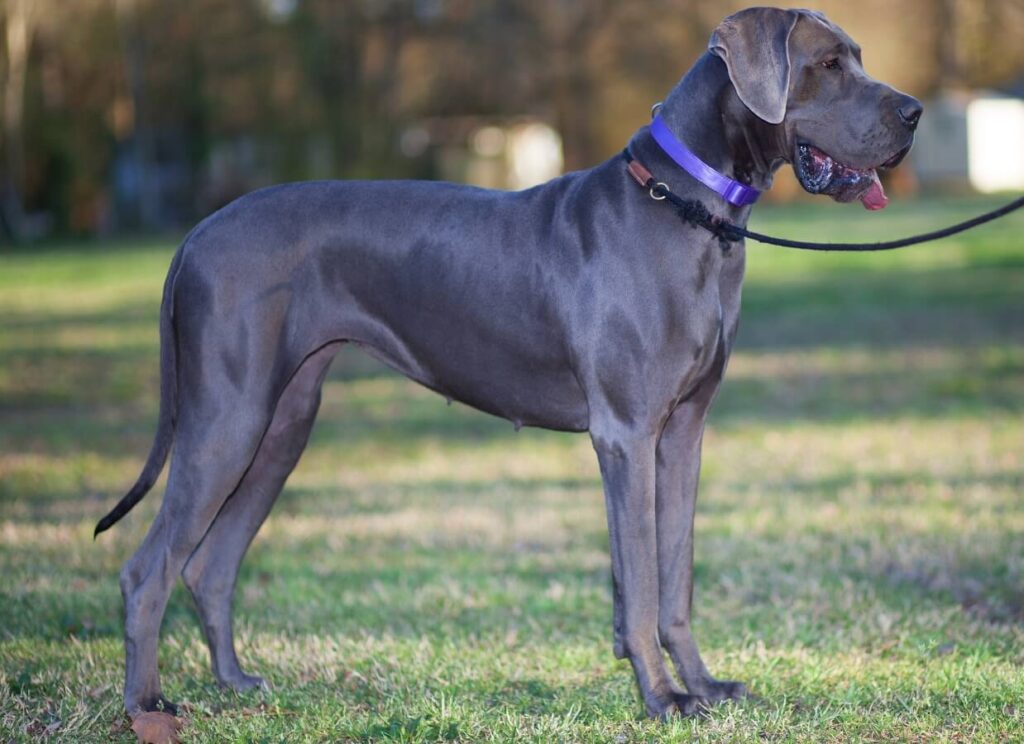
10. Female Great Dane and the Heat Cycle
What happens when the Great Dane dog goes into heat?
Generally, Great Danes come into heat twice a year, with each cycle lasting about three weeks. During this time, their bodies undergo a number of changes, including an increase in vaginal discharge and a swelling of the vulva.
Additionally, they may be more restless and vocal than usual. It is common for there to be changes in behavior and appetite during this time. They are susceptible to pregnancy for the entirety of this heat cycle, but especially on the day when they ovulate.
Should female Great Danes be spayed during their heat cycle?
We suggest waiting until your Great Dane is NOT in estrus (heat) to perform any surgical procedure.
During this time (heat cycle) female large breed dogs have an abundance of hormones. Your veterinarian will have insight into the best time to spay your female, based on the circumstances, their age, and their health.
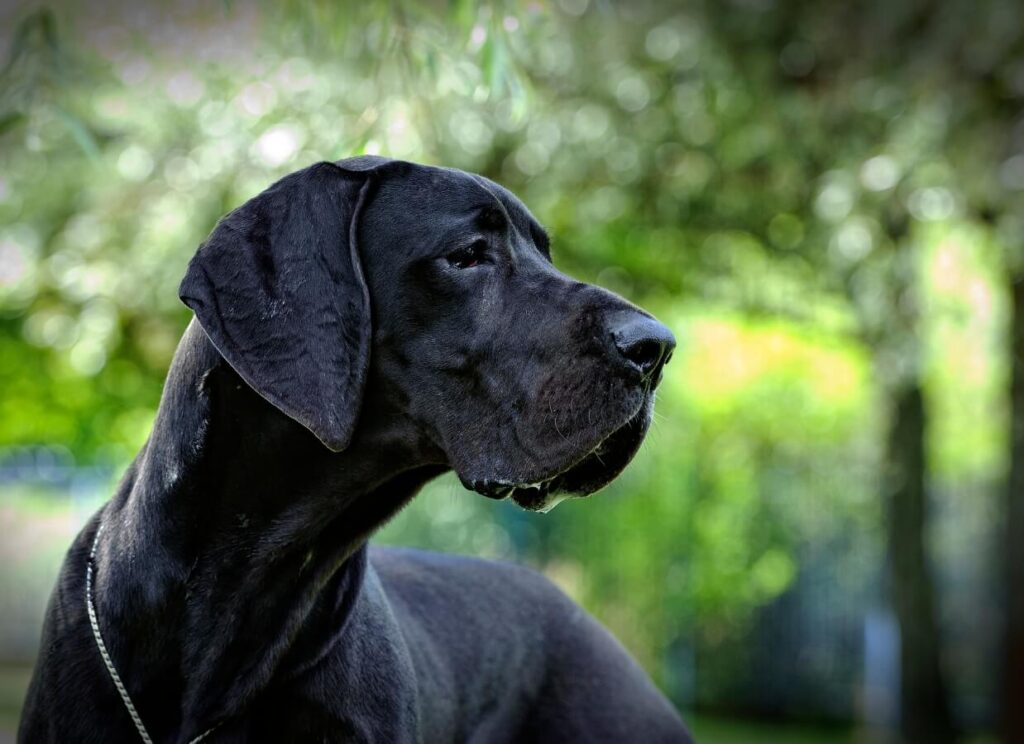
Why is my Female Great Dane acting pregnant during her heat cycle?
Your female Great Dane has likely entered into a false pregnancy.
Do not spay your Great Dane while they are experiencing a false pregnancy or other health issues. Her nipples could fill up with milk, and Great Danes sometimes even carry around stuffed animals. Males tend to get antsy and sometimes there is excessive barking from the male counterparts.
During this 3-4 month time, you should not consider spaying your Great Dane. The only consideration for this would be that you have been given a pet health report from your veterinarian that your Great Dane is experiencing uterine infections, which is life threatening.
Why should I not spay my Great Dane during her heat cycle?
Your female Great Dane is extremely susceptible to bleeding out and other health problems during surgery if you choose to spay during her heat cycle. There is an excessive blood supply as well as raging hormones in your Great Dane. You should plan routine blood testing and ensure that you are planning your spay according to your Great Danes hormones.
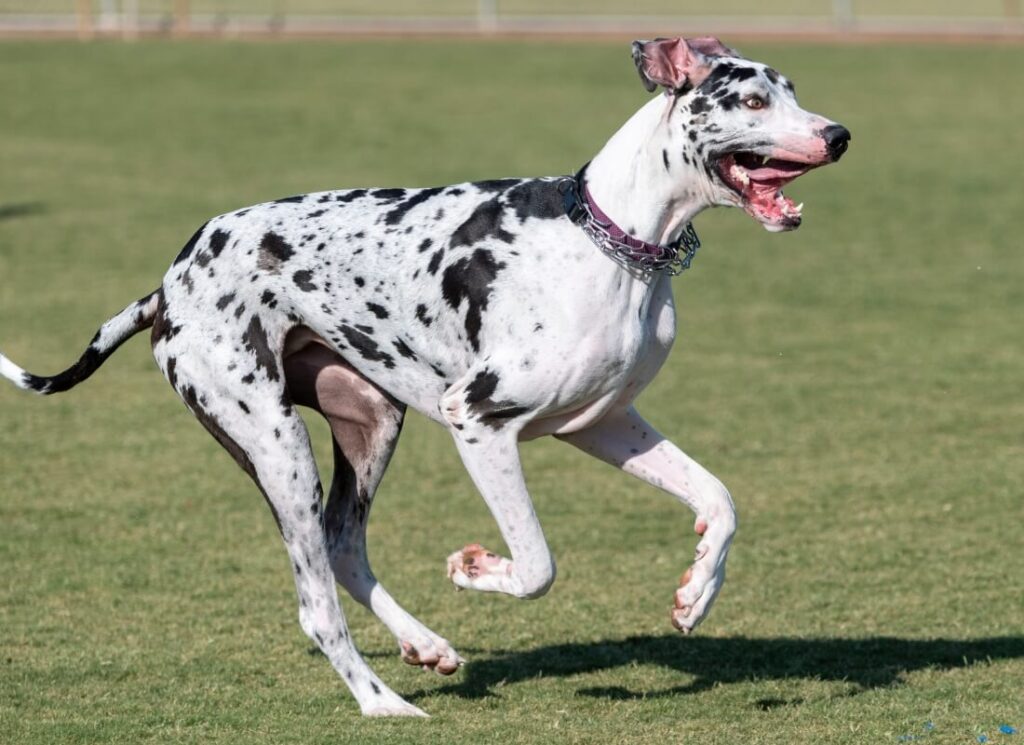
In conclusion
In conclusion, you need to make the best decision for your Great Dane dog . You need to factor in her health, your lifestyle, and whether or not you plan to breed her. Talk with your veterinarian about the best time to spay your Great Dane. Use this article as a guide to ask the right questions and make an informed decision.
There are risks of spaying your Great Dane dog and there are risks of letting her stay in-tact. We hope that by outlining those risks and benefits, it can help you to make the best decision possible.
READ MORE:
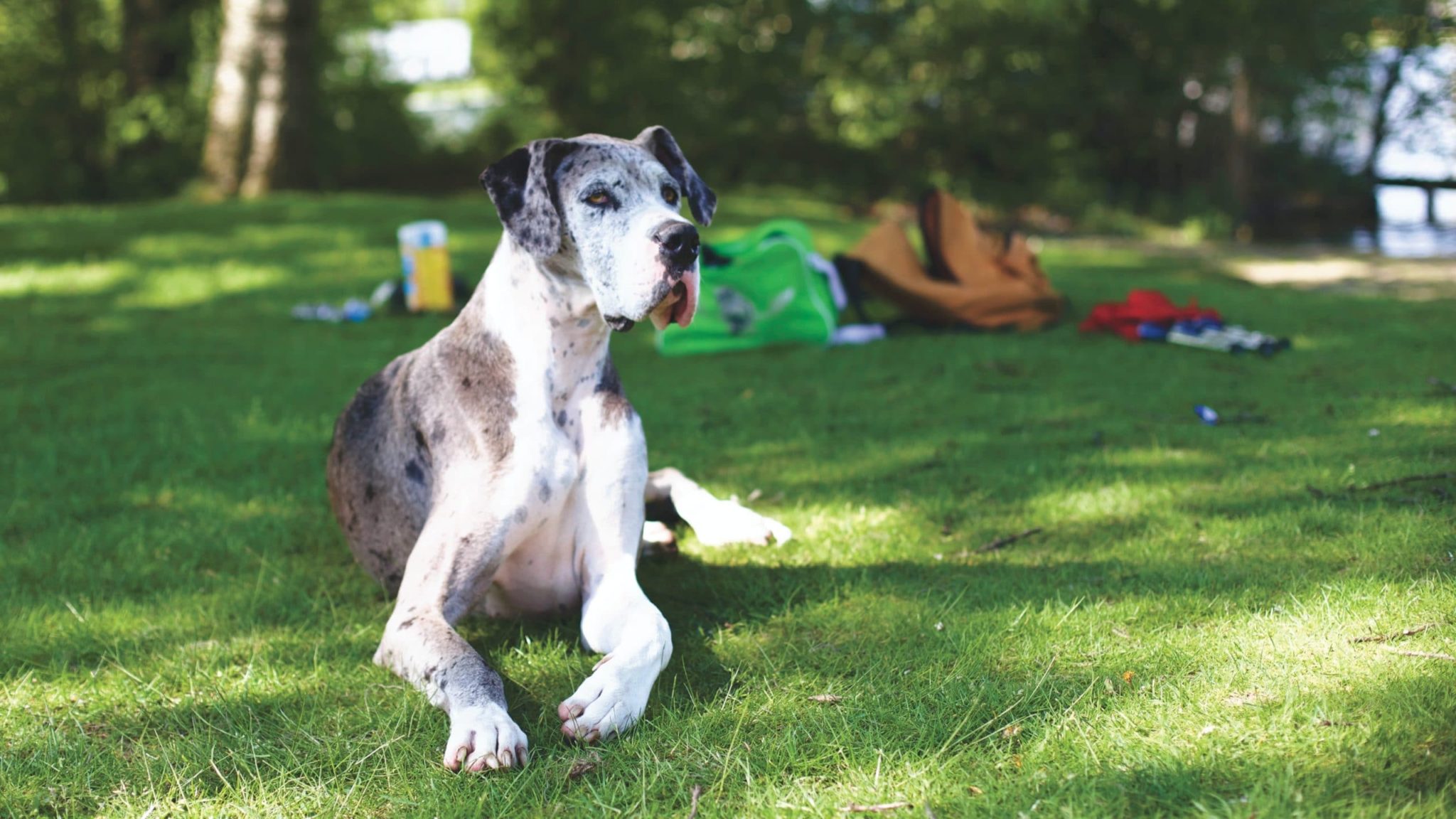
Leave a Reply